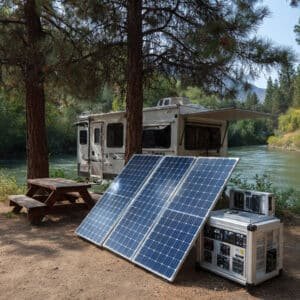In an age where technology often rules our navigation, knowing how to use a compass and map might seem like a lost art. However, mastering these classic skills can be invaluable, whether you’re planning a backcountry adventure or simply want to be prepared for emergencies. Here’s a comprehensive guide to getting started with these essential tools.
Why You Should Learn How to Use a Map and Compass
Understanding how to use a map and compass can make the difference between safety and disorientation. These skills ensure that you can navigate accurately without relying on electronic devices, which can fail or run out of power. In survival situations, this knowledge is not just useful—it’s critical. Furthermore, the ability to read a map and use a compass can deepen your appreciation of the natural world and improve your overall preparedness.
Compass Basics
A compass is a simple yet powerful tool designed to help you find direction. Here are the key components:
- Magnetic Needle: The needle points to magnetic north. It’s usually marked with red or a contrasting color.
- Base Plate: The transparent, flat piece that holds the needle and helps you align the compass with your map.
- Orienting Arrow: Found inside the compass housing, it helps you align the compass with the map’s grid lines.
- Bezel or Azimuth Ring: The rotating ring with degree markings that lets you set your compass bearing.

Suunto MC-2G Global Compass
A high-quality compass with a global needle, adjustable declination, and a transparent base plate, perfect for precise navigation.

Cammenga M-1950 Lensatic Compass
A rugged, military-grade compass known for its durability and reliability, ideal for challenging environments.

Brunton TruArc 15 Compass
A versatile compass with a mirror and a clinometer, designed for both hiking and professional use.

U.S. Army Lensatic Compass
A robust, military-style compass with a metal case, luminous markings, and a built-in sighting mechanism.
Map Basics
Maps provide a visual representation of the terrain, complete with details such as elevation, landmarks, and routes. Key elements include:
- Scale: Indicates the ratio between map distance and actual distance on the ground.
- Legend: A key that explains symbols used on the map, such as trails, roads, and water bodies.
- Contour Lines: Lines that represent elevation changes. Closer lines mean steeper terrain.
Recommended Maps:
A topographical map that’s detailed and durable, ideal for outdoor adventures
A comprehensive atlas with detailed topographic maps, perfect for exploring remote areas.
Official topographic maps from the US Geological Survey, offering precise detail for professional use.
While not a physical map, this app provides access to a wide range of downloadable maps for offline use, complementing traditional navigation tools.
Additional Compass and Navigation Tools
Compass and Map Set
A comprehensive survival kit that includes a high-quality compass and a topographic map, ideal for emergency preparedness.
Digital Compass
A versatile GPS watch with a built-in digital compass, barometer, and altimeter, offering modern navigation tools alongside traditional methods.
Compass and Map Case
A waterproof map case to protect your maps from the elements and keep them accessible during your adventures.
Navigation and Survival Gear
A compact survival kit that includes a signaling mirror, compass, and other essential tools for emergency situations.
Advanced Navigation Tools
Handheld GPS Devices
Provides GPS navigation along with satellite communication capabilities, combining modern technology with traditional navigation.
GPS and Map Software
Gaia GPS Premium Subscription
Offers advanced mapping and GPS features for offline use, ideal for those who prefer digital tools to complement traditional maps.
Map and Compass Training Kit
Includes instructional materials, a practice compass, and sample maps to help you master navigation skills.
Topographic Map Pack
A collection of high-quality topographic maps for various regions, perfect for detailed planning and navigation.
Survival and Emergency Kits
Emergency Survival Kit
An all-in-one first aid kit that includes a compass and other essential survival tools.
Backpacking Survival Gear
Compact and comprehensive, this kit includes a signal mirror, compass, and other survival essentials.
Outdoor Adventure Kit
Includes medical supplies along with a map, compass, and other navigation aids for outdoor adventures.
Personal Safety and Navigation Gear
While not directly a compass or map, this action camera can be used to document your journey and track your route visually.
Skill 1: Orient a Map Using a Compass
Before you start navigating, you need to orient your map with the terrain. Here’s how:
- Lay the Map Flat: Spread out your map on a flat surface.
- Align the Compass: Place the compass on the map with the base plate parallel to the map’s grid lines.
- Turn the Map and Compass Together: Rotate both the map and compass until the magnetic needle aligns with the orienting arrow on the compass. This ensures that your map is correctly oriented to the north.
Skill 2: Plot a Course
To plot a course on your map:
- Identify Your Starting Point and Destination: Mark both on the map.
- Use the Compass: Place the compass on the map with the edge connecting the two points.
- Adjust the Bezel: Rotate the bezel until the orienting arrow aligns with the magnetic needle.
- Record the Bearing: The number on the bezel is your bearing. This is the direction you need to travel.
Skill 3: Travel by Following a Compass Bearing
To follow a bearing in the field:
- Set Your Compass Bearing: Rotate the bezel to the bearing you recorded.
- Hold the Compass Level: Ensure the compass is level for an accurate reading.
- Align the Needle: Turn your body until the magnetic needle lines up with the orienting arrow. This means you’re facing the correct direction.
- Travel Straight: Move in the direction of the needle. Periodically check the compass to ensure you’re staying on course.
Skill 4: Figure Out Your Location on a Map
To determine your location:
- Identify Visible Landmarks: Use prominent features around you and find them on your map.
- Use a Compass to Measure Bearings: Point your compass at each landmark and note the bearing.
- Plot the Bearings: On your map, draw lines from each landmark location in the direction of the bearings.
- Find the Intersection: Where these lines intersect is your approximate location.
Mastering the use of a compass and map not only enhances your navigation skills but also adds an extra layer of security in any situation. By practicing these techniques and equipping yourself with the right tools, you’ll be well-prepared to handle whatever challenges come your way. So, grab your compass and map, and start honing these vital skills today!




































